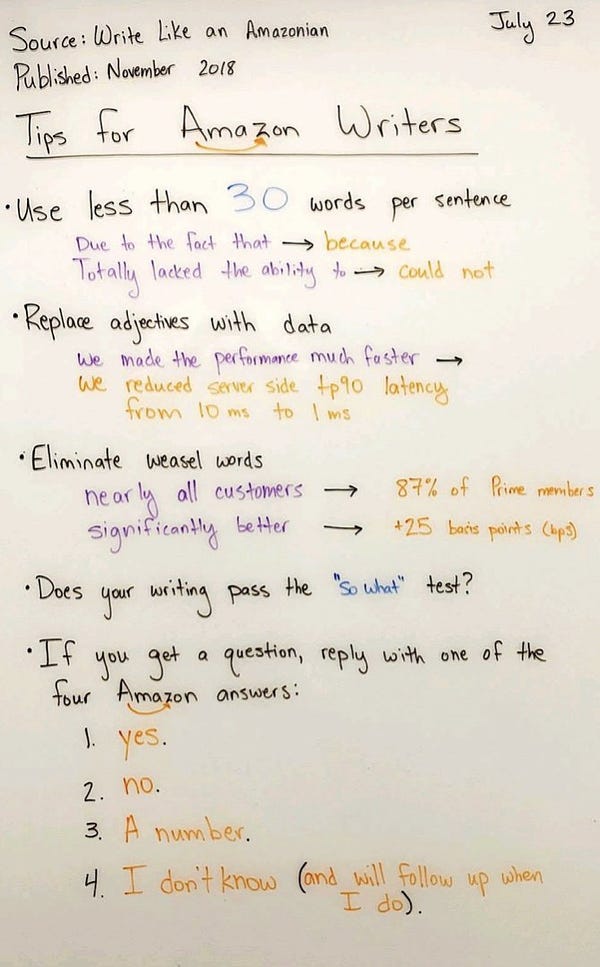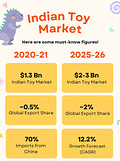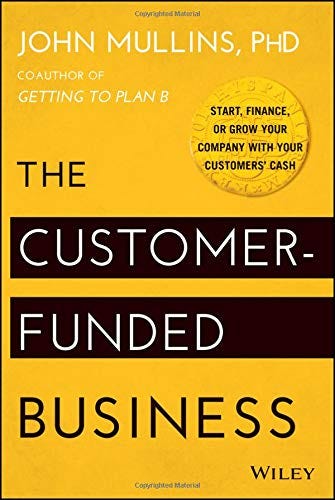The Indian Toy Industry, D2C Cross Promotions
Why rely on toxic Chinese toys when you can have high quality 'Made in India' toys?
Thank you for all the ❤️ on our Trends 2.0 newsletter re-launch! Join 1500+ subscribers to get the The Indian Dream Trends (TID Trends) newsletter in your inbox.
Each week, we’ll share 2 to 3 new business opportunities based on the latest market trends along with high quality business content from around the internet.
This week, you'll find:
Opportunities in the Indian Toy Industry
D2C Marketing Made Easy
TID's 3-2-1 (3 Tweets, 2 Podcasts, 1 Article)
TID’s Book Recommendation - The Customer Funded Business
The Indian Toy Industry
Would you rather have your kids play with toxic plastic toys from China or choose quality homegrown brands that promote our culture and boost our economy?
Some facts to think about:
All this growth and more for the Indian Toy Industry! This is a market that is all set to thrive in the coming years. With stringent import rules in place and a rise in awareness regarding the (un)safety of most imported toys, there is going to be an influx of local toy brands.
The government is also making certain mammoth movements towards developing a homegrown toy industry. In a 2021 press release the government made it abundantly clear that it will take all possible steps to nourish the native toy industry.
“Government is providing all round support to domestic toy industry by promoting Made in India toys; monitoring quality of toys; restricting imports of sub-standard and unsafe toys; promoting indigenous toy clusters; designing of toys based on Indian values, culture, and history; using toys as a learning resource and organizing hackathons and grand challenges for toy designing and manufacturing.”
The Virtual Toy Summit 2021 organized in February-March 2021 as a part of PM Modi’s Aatmanirbhar initiatives saw over 1000 virtual stalls, webinars by state governments and panels by experts. Post the fair, several Indian toy start-ups have risen to manufacture and sell “Made in India” toys.
This virtual fair, which was the first ever for our country, came after a series of decisions from the government to gently nudge the Indian Toy manufacturing industry. The most prominent one being the 2020 increase in the import duties from 20% to 60%. The government also issued a Toys Quality Control order in 2020, according to which every toy must bear a standard BIS mark- domestic and international alike.
Why do we need to build an Indian Toy Industry?
If the government’s intentions aren’t enough to persuade you, here are a few more reasons to build for the Indian Toy Industry:
90% of the toy market is unorganised - a massive unorganised sector is always ripe for disruption.
The unorganised sector is full of toxic toys unsafe for any child. For instance, most Chinese plush toys are full of phosphate which can harm children and adults alike. A Chennai-based start-up (Ariro Wooden Toys) started manufacturing Neem wood toys because the founder’s daughter developed a severe skin condition because of plastic toys.
India has a long history and culture of Toys. Can you go to these roots and employ local artisans? Say for instance Rajasthan's mitti ke gudde or wooden lattoos, or Gujarat's thigda dhingla. In fact, Naresh Kumar Gupta, owner of Funzoo Toys India is planning to redesign some of these local dolls and bring them back in the market. This is a great way to enable a better future for the artisans and is also a fantastic brand story. PS: This is exactly what vocal for local stands for.
Most toy manufacturing is labor-intensive. If a robust manufacturing process is created in India, it could lead to increased rural employments and job creation.
Toy Story in the making: Future Opportunities for the Indian Toy Industry
Recently, IKEA announced its intentions to scale-up the sourcing of Indian toys. Turning our country to a marketing hub for toys can be THE future we’ve all been waiting for. We’ve figured out a few opportunities in this space:
Since we can’t beat the mass manufacturing units of China, coming up with innovative and creative new toys can scale-up our market. Toy making can be local, employing rural artisans and setting up small-scale units. Like we said before, this is a brilliant way to create more jobs in the market as well.
Going back to our toy roots. Be it wooden animals, clay bride and groom dolls or the heavily adorned Kutchi toy puppets, incorporating our rich cultural heritage can prove to be a monumental success. Double tap for indigenous toys!
Employing some quality content marketing will give the industry the kick it needs. Building content for indigenous toys, having travel influencers explore the local toy stalls across India, or simply making videos on the rich origins of traditional toys can help the cause tremendously. If someone is up for it, exploring the religious roots might also help promote these toys.
There is an increased demand for STEM toys. Using AI to come up with fun and educative toys can be an interesting and unique venture for our toy industry. Sure, India has limited manufacturing capabilities in this arena, but with some efforts and a LOT of R&D, we can scale-up! Funvention, a proud “Made in India” start-up offers STEM learning toys. Luma World also makes some interesting fun-with-learning toys and games for kids.
Subscription toy boxes! These are already a hit in the west and India is catching up. Players like Flintobox, Shumee and Magic Crate offer some amazing toy subscriptions.
How about bridging the gap between digital and physical games? Something that offers a physical element along with an online experience can be a huge hit among adults. Remember the Nintendo Wii? The archery console was legit a bow. Something similar for popular kids toys can amp up the industry in no time!
Quality toys are going to make a comeback and we are holding our breaths, waiting for that to happen. All the efforts are pointing to a positive (toy) story! Dealing with the demand-supply mismatch in the industry might be a problem we need to deal with. BUT, considering our heritage and local skillsets, we will soon be able to conquer the market. Maybe even become a global player!
What do you think of the Indian toy industry? What would you like to build? Which are your favourite toy companies?
D2C Cross Promotions: A Sneak Peek into the future?

D2C is growing fast in India. And with good reason too. D2C allows you to have an increased control over your brand image, direct access to consumer database and a wide range of marketing opportunities. However, D2C is not without its vices.
Most D2C owners have to pay hefty sums in marketing to acquire customers. Facebook and Google Ads end up draining a ton of your money. Since most of these D2Cs are mostly small e-commerce brands, they cannot afford to keep going like this. Especially if they sell less-frequency items, and thus don’t have high customer lifetime value.
What if someone (say you!) were to create a platform where multiple such brands can partner up and promote each other?
We recently bought some protein bars and breakfast cereal from The Whole Truth (highly recommended!) and got a discount code for a shoe company- Neemans (most comfortable stylish shoe I’ve worn recently)
A platform where such cross-promos can happen will be a huge hit among small-scale e-commerce brands. This will not only enrich these businesses, but will also act as an awesome marketing tool. The key is to pair two completely different brand categories.
Currently, Shopify lets to add a plugin to other brands on your page and offers a percentage of the revenues from the sales generated. Check out this video on how to do it.
Creating something large-scale with a similar concept as below will be a win-win situation for all parties involved. While you do that, maybe come up with ways to automate the entire process?
TID's 3-2-1 (3 Tweets, 2 Podcasts, 1 Article)
3 Tweets for the Week
A simple enough idea for those looking to start a new business. Pick a highly successful business (in a market that's not driven by network effects) and do the same stuff as them. The successful business has clearly proven that a market exists.

And here's the opposite of the first Tweet. The difference is the kind of products being sold.

These heuristics will improve your writing by 64.5%


2 Podcasts
The fascinating journey to build a Rs. 100 Cr+ Advertising Business
We spoke to Suveer Bajaj, Co-founder of FoxyMoron and Zoo Media. Suveer started building FoxyMoron at the age of 19 with a seed capital of Rs. 64,000 ($1000). Today, he runs a Rs. 100 Cr business on the intersection of Advertising, Tech, Content & Data. Listen to his fascinating journey as he built one of India’s best digital marketing agency and his plans with building an Advertising Network - Zoo Media (Owns 7 Advertising Agencies).
If you’re on Twitter, you’ve heard about Web3. And you probably have no idea what people mean by Web3. Well, worry no more. This is a fantastic episode on the Tim Ferris podcast with Naval Ravikant (Co-founder AngelList) and Chris Dixon (Partner, a16z - Focused on Crypto) which tries to explain this new technology paradigm - Web3.
1 Article - The Riches Are Not in The Niches by Neil Patel
If you're an avid listener of our Podcast, you've probably heard us say a thousand times that 'the riches are in the niches'. Our latest episode title is literally “Building Riches in Niches”.
However, Neil Patel refutes that claim - this is his reasoning:
"If you are going to create a business, it takes the same amount of work to create a business in a small niche as it would to go after a big total addressable market.
And believe it or not, it’s actually easier to generate more revenue when you are in a big market, versus going after a niche."
We agree with him. A niche is a great place to start a business because you’ll have minimal competition. However, if your ambition is to grow then you can’t just stay there. You have to venture out into the larger market and compete with the incumbents.
For example, you can start by only selling foot cream for people in Nagaland but if you really want to grow, you’ll have to start selling to the Indian market as a whole and compete with the likes of Himalaya.
TID’s Book Recommendation - The Customer Funded Business by John Mullins
Everytime I evaluate a new business idea for our business munchies episodes or talk to a new founder, I always look at the ideas & business models through the lens of this book. John Mullins provides a fantastic framework on how to build a bootstrapped business.
There are five customer-funded business models that John describes:
Service-to-product - my favourite bootstrapped model. Start a service business to pay the bills while you build a product for the big scale-up. Basecamp, Map My India and many other businesses were started this way.
Pay-in-advance - Ask your customer to pay in advance while you build the product. Tesla is the best example of this model. Tesla had 600,000 pre-orders for the CyberTruck in 2020 costing $100 per pre-order. That means that they had $60 million with which they could buy raw materials, build out factories and build manufacturing processes without looking for outside funding.
Subscription - Simple and effective subscription revenue. The foundation of the SaaS revolution.
Security/Flash sales - products sold in a limited availability. Popular a decade ago, still useful for certain use cases.
Matchmaker - bringing buyers & sellers together and making a commision.
We’ll be recording a Podcast with John in late December 2021 and releasing the episode in January 2022. Subscribe if you want to be updated when we release!






